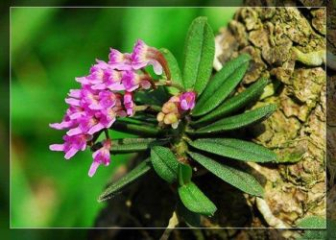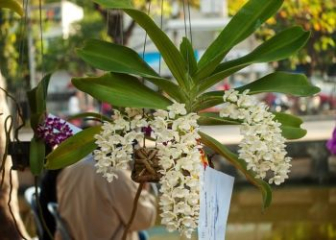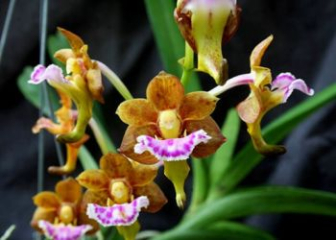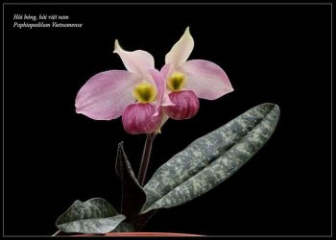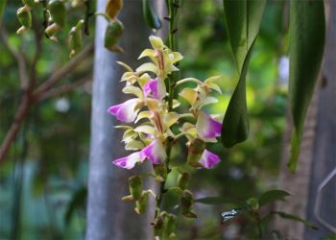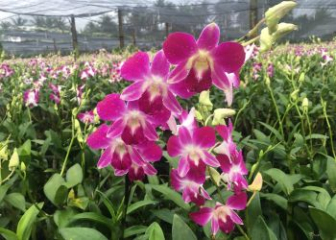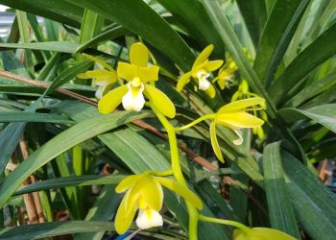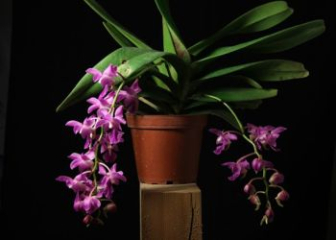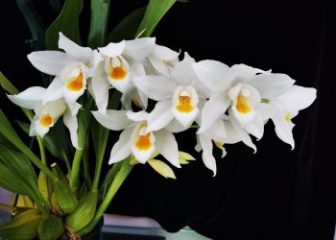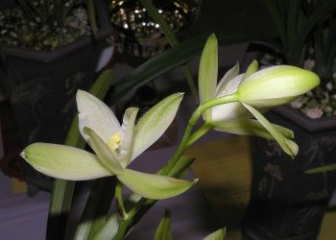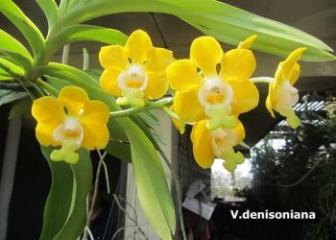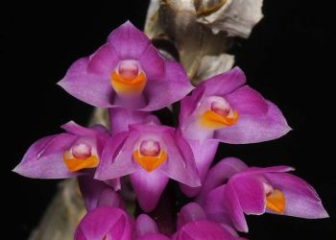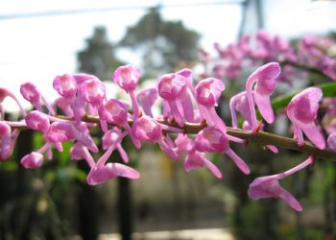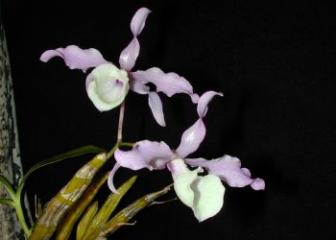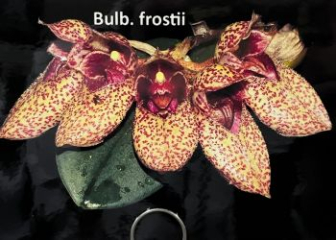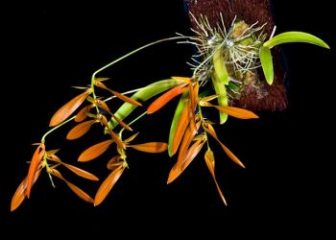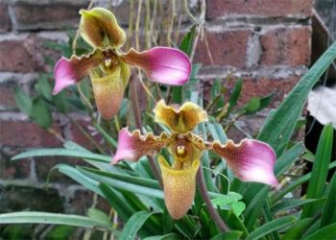Phalaenopsis Orchids (Butterfly Orchids) - Characteristics, Classification & How to Grow
Blog | by
Phalaenopsis orchids (moth orchids) are one of the most popular orchids today. Learn more about their origins, characteristics, and care here.
When it comes to orchids, most people will immediately think of Phalaenopsis orchids , right? This is indeed a very popular orchid and is loved by many people. With soft petals like butterflies, a variety of colors and the ability to keep flowers blooming for a long time, Phalaenopsis orchids are not only a normal flower but also a gift often given to others on important occasions.
In today's article, let's learn more about phalaenopsis orchids with wild orchids to see why this flower is always the top choice of orchid lovers.
Introduction to Phalaenopsis orchids
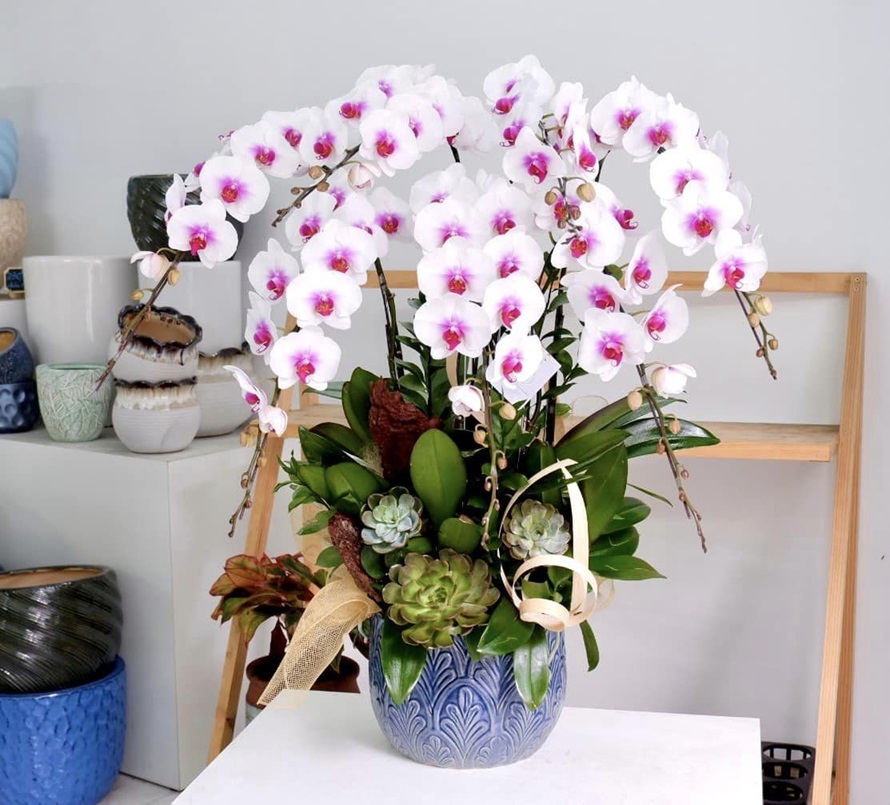
A super beautiful and luxurious Phalaenopsis orchid pot.
Phalaenopsis orchids (scientific name: Phalaenopsis) are a tropical orchid species in Southeast Asia, including countries such as Indonesia, Malaysia, Taiwan, China, and the Philippines. They often grow in humid rainforests, clinging to large tree trunks (epiphytic orchids) and absorbing moisture from the air.
Since the beginning of the 20th century, phalaenopsis orchids have been bred and developed in Europe to create flowers with more colors and shapes.
Up to now, Phalaenopsis orchids have been grown industrially in Vietnam, China, Taiwan and then exported globally. Of which, Taiwan is currently the world's largest Phalaenopsis orchid exporting center.
The name “Phalaenopsis” is a combination of two Greek words, “Phalaina” meaning “moth” and “Opsis” meaning “like”, combined to form “like a moth”, referring to the shape of phalaenopsis orchid flowers that look like butterflies.
General characteristics of Phalaenopsis orchids

A pot of phalaenopsis orchid with pure white color.
Let's learn about some characteristics of the Phalaenopsis orchid line to see what makes them different from other orchid species and why they are so famous and popular.
- Stem : Short stem, no pseudobulbs, upright plant can be 15 - 50 cm high depending on the species.
- Leaves : Leaves grow symmetrically, are long, thick and elliptical, have a glossy dark green color and are succulent.
- Flowers : The flowers are very large, with round, soft and well-proportioned petals, and the overall appearance resembles a butterfly - which is why this flower is called "Mothfly". Flowers appear on branches, each branch has 5 - 20 flowers, with a variety of colors such as white, purple, pink, red, orange, yellow, striped, mottled, polka dots, etc.
- Flowering time : Very long, from 1 - 2 months or sometimes more if well cared for.
- Roots : Large, silvery-white or green aerial roots with an outer layer called velamen that absorbs water and protects the root system. They can grow well outside the pot if not regularly trimmed.
- Growth habits : Phalaenopsis orchids are moisture-loving, epiphytic plants that grow on trees and prefer moist, cool environments with indirect light. They usually bloom from spring to early summer. Some species can even bloom year-round if properly cared for.
- Physiological characteristics : Phalaenopsis orchids prefer substrates such as pine bark, charcoal, and coconut fiber. They are especially susceptible to waterlogging, leading to root rot if watered too much.
How to grow & care for Phalaenopsis orchids
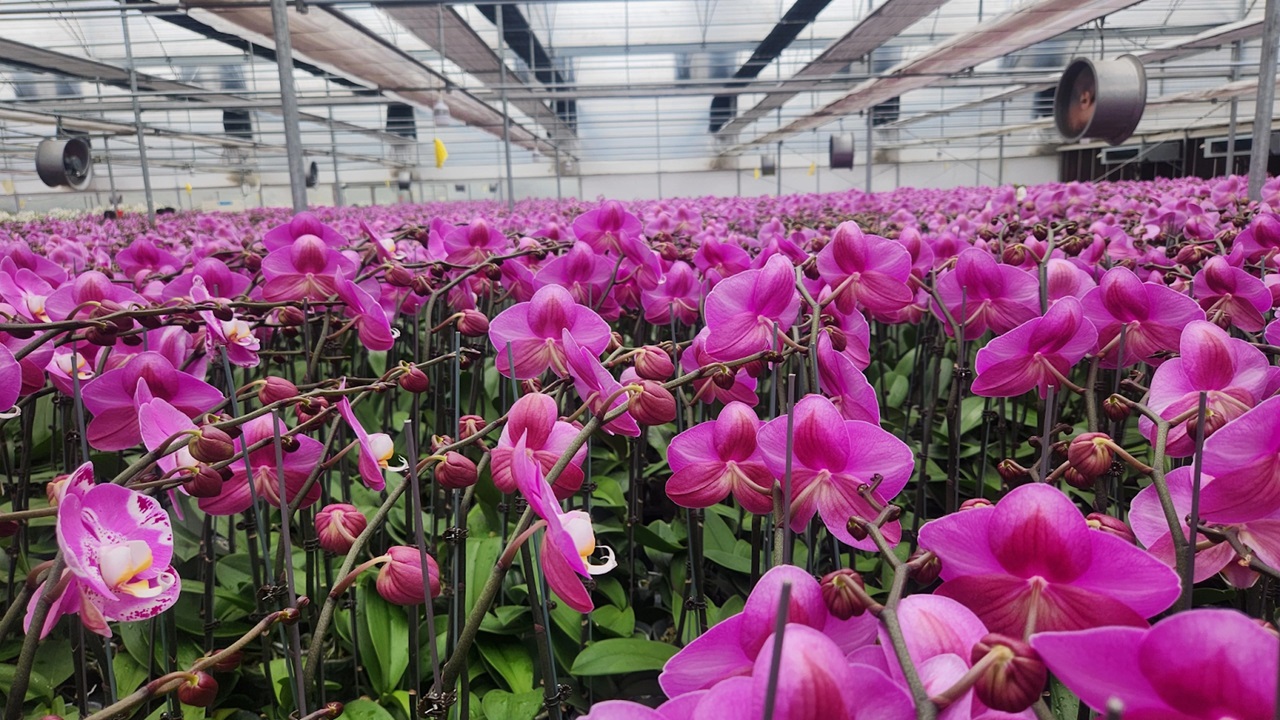
A garden of phalaenopsis orchids is grown in a greenhouse.
Phalaenopsis orchids are not only beautiful and long-lasting, but they are also quite easy to care for. However, if you want your orchid to grow best and produce the most flowers, please refer to the detailed planting and care instructions shared below.
Select seeds & prepare growing medium
The first step is to choose orchid varieties and prepare the growing medium and pots for orchids. Please note the following.
Choose orchid varieties :
- Choose healthy Phalaenopsis orchids that have 2-3 dark green colors and undamaged roots.
- Tissue culture seedlings can be purchased or separated from mature (flowering) plants.
Prepare pot and substrate :
- Use a clear plastic pot or a terracotta pot with drainage holes that are the right size for the base of the plant.
- Choose popular, well-ventilated, moisture-retaining substrates such as: pine bark, charcoal, coconut fiber, pumice,...
- Remember to treat the substrate before planting to limit fungal diseases.
How to grow Phalaenopsis orchids
After choosing the variety and preparing the growing medium and pot, you proceed to plant orchids according to the following steps:
- Step 1 : Treat the plant by washing the roots, cutting off damaged or rotten roots. Then soak the roots in an antifungal solution for about 10 - 15 minutes, wait for the roots to dry.
- Step 2 : Place the plant in the pot so that the roots are in contact with the substrate but not completely covered. Use a clamp to lightly secure (if necessary). Do not plant too deep, keep the roots airy.
- Step 3 : Then place the plant in a cool place with indirect light for 1 week. After 1 week, start watering.
Plant care after planting
If you want your Phalaenopsis orchid to take root and grow well, and produce many flowers, you should pay attention to factors such as light, watering and fertilizing. Specifically as follows:
Suitable lighting :
- Phalaenopsis orchids do not like direct, harsh light.
- Maintain ideal temperature between 20 - 30 degrees Celsius.
Watering Phalaenopsis orchids :
- Water orchids only 2-3 times a week, depending on the weather.
- Before watering, check the growing medium to see if it is still moist. If it is still moist, there is no need to water.
- Avoid leaving water on the leaves as it can easily cause top rot.
Fertilizer :
- You should use specialized NPK fertilizer for orchids with a content of 20-20-20 or 30-10-10.
- Dilute ½ dose and apply twice a week to the roots. Avoid spraying directly onto flowers.
- During the flowering stage of Phalaenopsis orchids, increase the phosphorus and potassium content to stimulate the plant to flower more and more beautifully.
Flower pruning :
-
After a season of fading flowers, you should cut close to the base of the flower branch to nourish new branches. Or if you want the plant to produce additional flowers, you can cut above the 2nd - 3rd node.
How to make Phalaenopsis orchids bloom on time
There is a secret to help you stimulate Phalaenopsis orchids to bloom on time, let's take a look right away.
- First you need to reduce watering frequency, slightly increase light for 2-3 weeks to stimulate flower buds to grow.
- Fertilize with NPK 6-30-30 or 10-55-10 twice a week.
- Maintain cool temperatures at night between 15 - 20 degrees Celsius then the flowers will develop soon.
Common diseases in Phalaenopsis orchids
Like many other orchids, Phalaenopsis orchids are susceptible to some common diseases such as root rot, tip rot, physiological leaf wilt or red spider, mealybug,... Here is an effective way to treat these diseases, please join us to learn.
|
Disease name |
Reason |
Symptom |
How to handle |
|
Leaf spot, leaf rot |
Plants infected with fungus or bacteria due to moisture |
Phalaenopsis orchids have yellow leaves, brown or yellow round spots appear on the leaves, gradually spreading. Leaves are soft and may fall off gradually. |
Remove diseased leaves Limit watering on leaves Use melasma medication such as Ridomil or Score according to the recommended dosage. |
|
Root rot |
Over watering Poor drainage Roots are waterlogged or infected with fungus. |
The roots turn black, mushy, and have an unpleasant odor. The orchid gradually withered, the leaves softened. |
Remove the plant from the pot and cut off any rotten roots. Soak the roots in the fungicide solution for 15 - 20 minutes. Replace all new substrate and replant treated plants. |
|
Red spider, mealybug, whitefly |
Due to cross-contamination of pathogens in the flower garden |
Leaves curled, discolored spider webs (red spider mites) or white cotton balls (aphids) or tiny white dots appear on the leaves. Plants grow slowly, leaves turn yellow |
Isolate diseased plants from the common orchid garden to avoid cross-contamination. Use 70 degree alcohol to clean leaves with aphids. Use biological drugs such as Neem Oil, Confidor to eliminate fungi, aphids, red spiders |
|
Physiological wilt |
Heat shock Long-term water shortage |
Leaves become wrinkled, soft, and withered. |
Maintain regular watering, ensure stable humidity and light |
Meaning of Phalaenopsis orchid
Phalaenopsis orchids are not only beautiful but also have many different meanings. They are often used as gifts on important occasions. Let's learn in detail about some of the special meanings of this special flower.
In feng shui :
- Phalaenopsis orchids carry strong positive energy that will help homeowners attract wealth and luck.
- Yellow orchid means wealth and prosperity.
- Pink/red orchids symbolize joy and luck.
- White orchid symbolizes a good start and purity.
In love :
- Orchid symbolizes deep and faithful love.
- Is a commitment to sustainability, long term.
- Symbolizes reunion and fulfillment.
The most popular beautiful Phalaenopsis orchids
Currently, there are about 70 species of Phalaenopsis orchids in nature and more than 30,000 hybrids. Here are some of the most beautiful and popular Phalaenopsis orchids today, let's learn more to see which flower you like best.
White Phalaenopsis amabilis
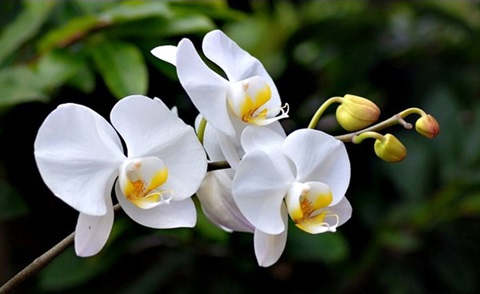
White Phalaenopsis orchid with pure color.
White Phalaenopsis orchid has the scientific name Phalaenopsis amabilis. This is the most popular Phalaenopsis orchid line today. The characteristics of this orchid line are that the flowers are naturally pure white, the petals are round, and the flower neck will be light yellow.
This flower symbolizes purity and elegance and is often given as a gift on weddings or opening ceremonies.
Phalaenopsis Golden Treasure

Pot of colorful yellow phalaenopsis orchids.
Golden Phalaenopsis orchid has the scientific name Phalaenopsis Golden Treasure, this is also a popular Phalaenopsis orchid line that is no less popular than the white Phalaenopsis orchid. This is a hybrid flower line that creates bright yellow flowers, dotted with some red, orange or brown dots in the center of the flower, which looks very striking.
Thanks to this colorful color, yellow orchids are also often used in wedding decoration, conferences or opening gifts.
Purple Phalaenopsis violacea
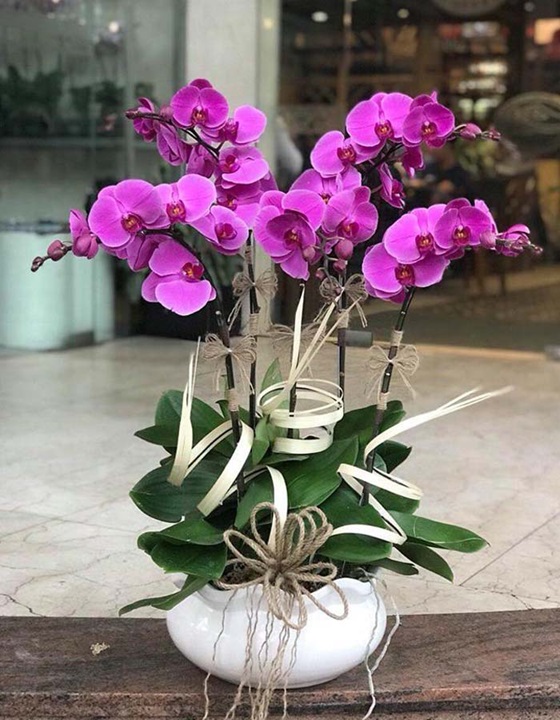
Pot of 5 purple orchid branches.
Purple Phalaenopsis orchid, scientifically known as Phalaenopsis violacea, is a wild orchid species native to Indonesia and Malaysia. The characteristics of this orchid line are dark purple or pinkish purple flowers, round glossy petals, and a light, pleasant fragrance.
Because of the above characteristics, purple orchids are very popular, often used for display, decoration or as raw materials to hybridize many new orchid varieties.
Phalaenopsis schilleriana
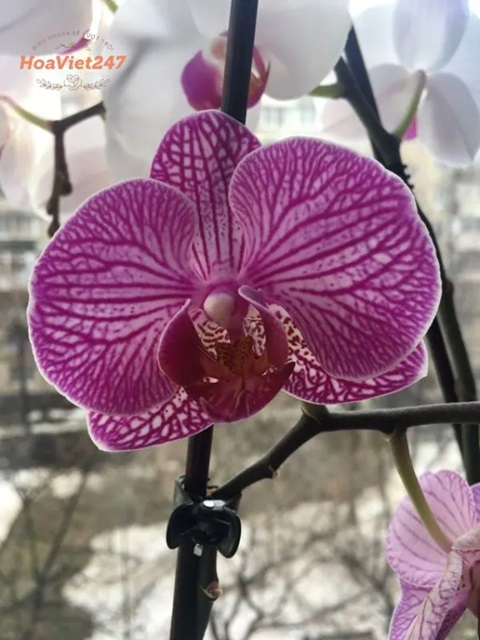
Zebra Phalaenopsis orchid.
The striped Phalaenopsis orchid has the scientific name Phalaenopsis schilleriana. This is one of the most impressive colored Phalaenopsis orchids with the main color being pink-purple or light purple with the highlight being beautiful dark stripes, their leaves also have alternating silver stripes creating a distinctive identification point. However, this flower line has quite small flower size, only from 5 - 7 cm.
The striped Phalaenopsis orchid is a rare natural wild orchid and is often sought after by orchid enthusiasts because of its very different appearance.
Mini Phalaenopsis orchid
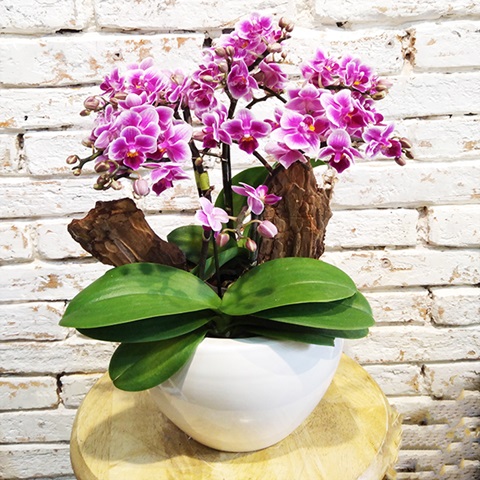
Small and pretty mini orchid pot.
Mini Phalaenopsis orchids are hybrids that have been bred to produce Phalaenopsis orchids with very small flowers, only 3 - 6 cm in diameter and about 10 - 20 cm in height. In general, they still retain the same shape and color characteristics as normal Phalaenopsis orchids.
Because of its small size and cuteness, mini phalaenopsis orchids are very popular and are often used to decorate desks, windows, etc.
Phalaenopsis orchid price list
Currently, Phalaenopsis orchids are sold very popularly in Vietnam with many different prices, depending on color, rarity or number of flower branches. Let's find out the price list below to know the exact price.
|
Phalaenopsis orchid |
Reference price |
|
White Phalaenopsis Orchid |
150,000 - 250,000 VND/branch |
|
Yellow Orchid |
180,000 - 300,000 VND/branch |
|
Purple Orchid |
200,000 - 350,000 VND/branch |
|
Striped Phalaenopsis Orchid |
200,000 - 450,000 VND/branch |
|
Mini Phalaenopsis Orchid |
60,000 - 180,000 VND/tree |
|
Phalaenopsis orchid pot with 3 branches |
450,000 - 800,000 VND/pot |
|
Phalaenopsis orchid pot with 5 branches |
1,000,0000 - 3,000,0000 VND/pot |
|
Phalaenopsis orchid VIP 15 - 30 branches |
4,000,000 - over 8,000,000 VND/pot |
Note :
The above price list is for reference only. Usually, on holidays, prices will be 30 - 70% higher than normal days, depending on the store.
Questions and answers about orchids?
How long does it take for a phalaenopsis orchid to bloom?
After the orchids sprout, they will bloom after about 1 - 2 months, depending on care conditions.
Should I cut the branches after the orchid has bloomed?
Yes, however, please note to only cut the branch from the second node onwards so that the orchid can continue to bloom.
Do phalaenopsis orchids like sunlight?
Phalaenopsis orchids do not like direct sunlight, they only like light diffused light.
Beautiful Phalaenopsis orchid pictures
If you also love phalaenopsis orchids, don't miss the collection of super beautiful phalaenopsis orchid images with many different colorful colors that we share below to satisfy your passion for flower viewing and love of flowers.
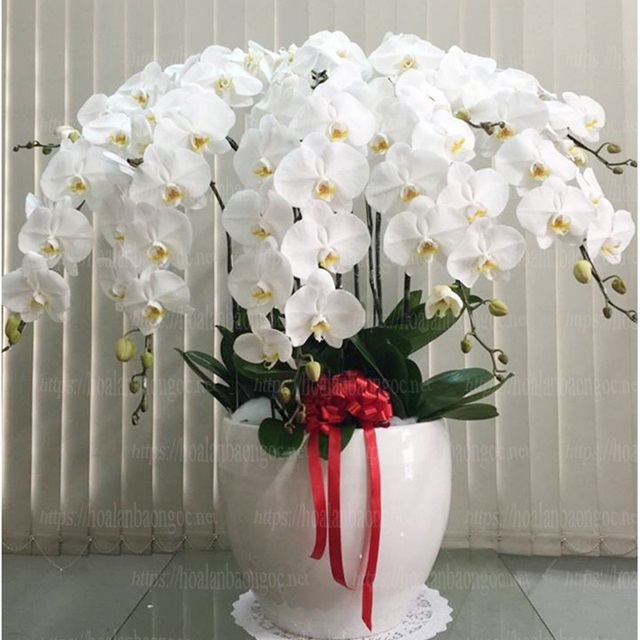
Super beautiful white phalaenopsis orchid pot.
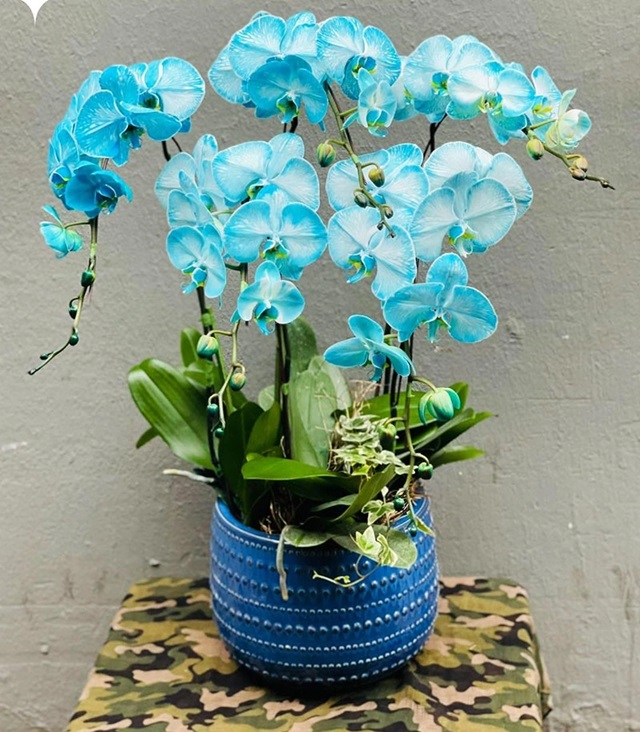
Pot of mutant Phalaenopsis orchid with strange blue color.
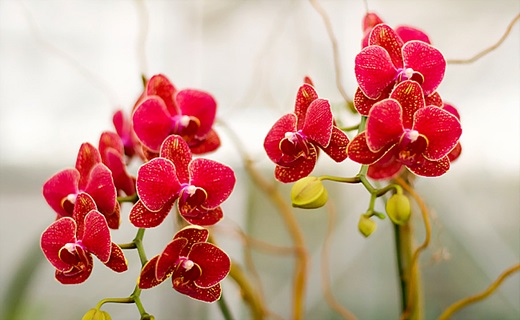
Phalaenopsis orchids have bright pink-red flowers.
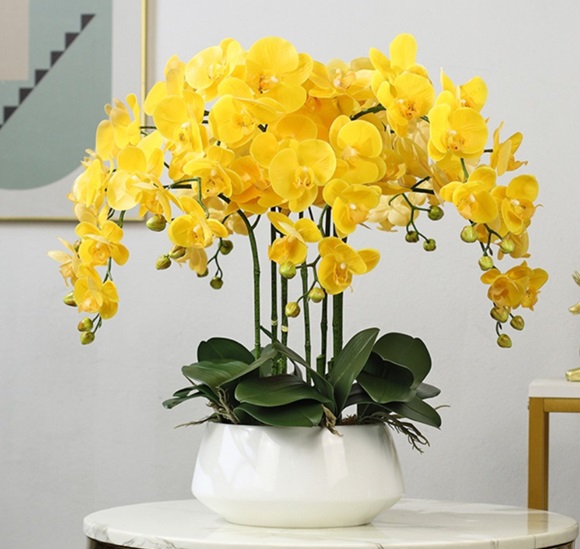
The fake Phalaenopsis orchid pot looks like the real thing.

Pot of pink phalaenopsis orchid with sweet beauty.
Above, orchid-vn.com has shared detailed information about Phalaenopsis orchids . Hopefully, you have learned more about the most beautiful and popular orchid species today and can find the most suitable Phalaenopsis orchids to grow and care for yourself.
Don't forget to visit our Blog section to learn & discover more interesting information about other beautiful and unique wild orchids!
